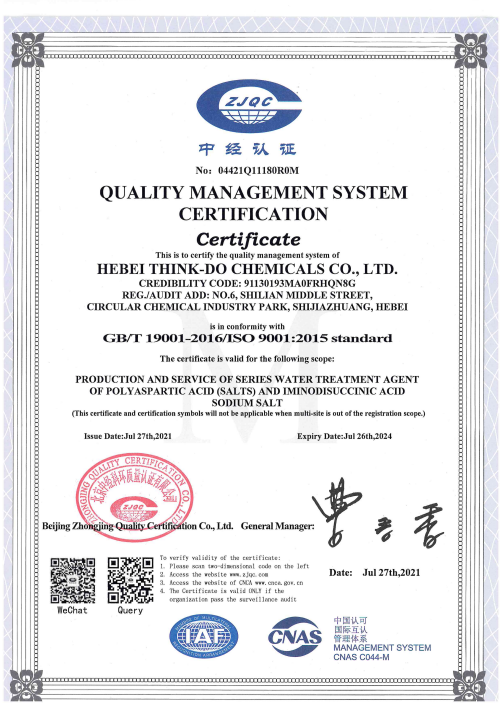
News
Там . 08, 2024 15:20 Back to list
Exploring Effective Chelating Agents for the Safe Removal of Arsenic from Contaminated Environments
The Role of Chelating Agents in Arsenic Detoxification
Arsenic, a naturally occurring element, is notorious for its toxicological effects on human health and the environment. Exposure to arsenic can occur through various avenues, including contaminated water, air, and food sources. The detrimental health effects of arsenic are well-documented, ranging from skin lesions and developmental effects to various forms of cancer. As such, the remediation of arsenic exposure is of paramount importance, and chelating agents have emerged as a promising solution in arsenic detoxification.
Chelating agents are compounds that can form multiple bonds with a single metal ion, effectively binding the metal and enhancing its solubility and excretion from the body. They are particularly valuable in the medical field for treating metal poisoning, including arsenic. Common chelating agents used for arsenic detoxification include dimercaprol, DMSA (dimercaptosuccinic acid), and EDTA (ethylene diamine tetraacetic acid). Each of these agents has distinct mechanisms of action and effectiveness, depending on the nature of the exposure and the time elapsed since exposure.
The Role of Chelating Agents in Arsenic Detoxification
DMSA is an oral chelating agent that has gained favor due to its lower toxicity profile compared to dimercaprol. DMSA effectively binds to arsenic, promoting its removal from the body. Clinical studies have shown that DMSA can significantly reduce arsenic levels in patients with documented exposure, leading to improved health outcomes. Importantly, DMSA is considered safer for long-term use and can be administered orally, making it more convenient for patients.
chelating agent for arsenic quotes

EDTA, on the other hand, is another chelating agent that has been widely studied. It is often used to treat lead poisoning, but its efficacy in removing arsenic is also recognized. EDTA works by forming a complex with arsenic ions and facilitating their excretion. However, its effectiveness can depend on the route of administration and the specific arsenic species involved in the poisoning.
The choice of chelating agent for arsenic detoxification can depend on several factors, including the timing of intervention, severity of poisoning, and the patient's overall health. It is crucial to note that while chelation therapy can be effective in reducing the burden of arsenic from the body, it should be employed carefully, as indiscriminate use may lead to loss of essential minerals and could provoke adverse effects.
In addition to their medical use, chelating agents are also being explored for environmental remediation of arsenic-contaminated sites. Researchers are investigating biodegradable chelators to aid in the extraction of arsenic from polluted water and soil, thereby preventing its bioaccumulation in food chains and minimizing human exposure.
In conclusion, chelating agents play a vital role in the detoxification of arsenic, offering significant benefits in both therapeutic and environmental contexts. As research continues to evolve, refining the use of these agents can enhance their efficacy and safety, paving the way for improved public health outcomes in the face of arsenic exposure. The integration of chelation therapy into arsenic management strategies remains a crucial step toward protecting human health and the environment from this pervasive contaminant.
-
Polyaspartic Acid Salts in Agricultural Fertilizers: A Sustainable Solution
NewsJul.21,2025
-
OEM Chelating Agent Preservative Supplier & Manufacturer High-Quality Customized Solutions
NewsJul.08,2025
-
OEM Potassium Chelating Agent Manufacturer - Custom Potassium Oxalate & Citrate Solutions
NewsJul.08,2025
-
OEM Pentasodium DTPA Chelating Agent Supplier & Manufacturer High Purity & Cost-Effective Solutions
NewsJul.08,2025
-
High-Efficiency Chelated Trace Elements Fertilizer Bulk Supplier & Manufacturer Quotes
NewsJul.07,2025
-
High Quality K Formation for a Chelating Agent – Reliable Manufacturer & Supplier
NewsJul.07,2025
